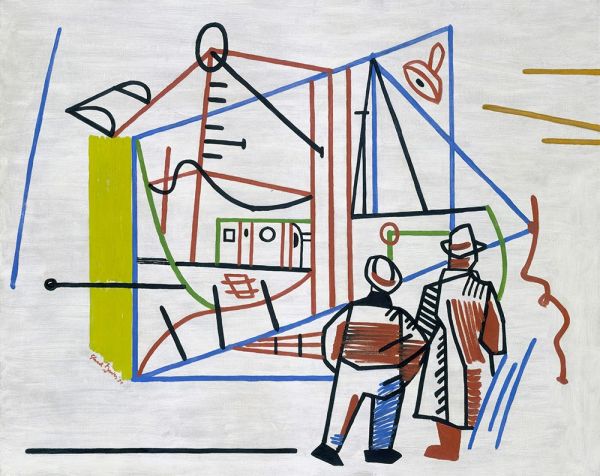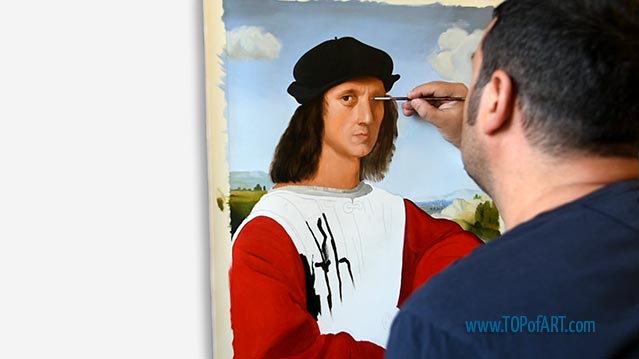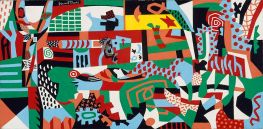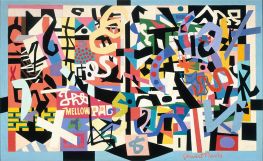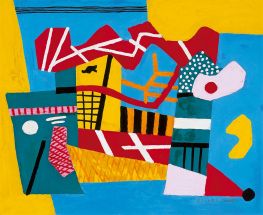Men and Machine, 1934 Stuart Davis (1894-1964)
Location: Metropolitan Museum of Art New York USAOriginal Size: 81.3 x 101.6 cm
Oil Painting Reproduction
If you want a different size than the offered
Description
Painted by European Аrtists with Academic Education
Museum Quality
+ 4 cm (1.6") Margins for Stretching
Creation Time: 8-9 Weeks
Creation Process
We create our paintings with museum quality and covering the highest academic standards. Once we get your order, it will be entirely hand-painted with oil on canvas. All the materials we use are the highest level, being totally artist graded painting materials and linen canvas.
We will add 1.6" (4 cm) additional blank canvas all over the painting for stretching.
High quality and detailing in every inch are time consuming. The reproduction of Stuart Davis also needs time to dry in order to be completely ready for shipping, as this is crucial to not be damaged during transportation.
Based on the size, level of detail and complexity we need 8-9 weeks to complete the process.
In case the delivery date needs to be extended in time, or we are overloaded with requests, there will be an email sent to you sharing the new timelines of production and delivery.
TOPofART wants to remind you to keep patient, in order to get you the highest quality, being our mission to fulfill your expectations.
We not stretch and frame our oil paintings due to several reasons:
Painting reproduction is a high quality expensive product, which we cannot risk to damage by sending it being stretched.
Also, there are postal restrictions, regarding the size of the shipment.
Additionally, due to the dimensions of the stretched canvas, the shipment price may exceed the price of the product itself.
You can stretch and frame your painting in your local frame-shop.
Delivery
Once the painting Men and Machine is ready and dry, it will be shipped to your delivery address. The canvas will be rolled-up in a secure postal tube.
We offer free shipping as well as paid express transportation services.
After adding your artwork to the shopping cart, you will be able to check the delivery price using the Estimate Shipping and Tax tool.
Museum Quality
The paintings we create are only of museum quality. Our academy graduated artists will never allow a compromise in the quality and detail of the ordered painting. TOPofART do not work, and will never allow ourselves to work with low quality studios from the Far East. We are based in Europe, and quality is our highest priority.
Additional Information
A limited but vivid palette of red, blue, yellow, and green is arranged in a manner that references the influence of Piet Mondrian, while the simplified forms echo Davis’s fascination with the jazz-like syncopation of shapes. The white ground appears almost luminous, creating a sense of openness behind the schematic structure. This clarity of color emphasizes the dynamic interplay among the lines and planes, imparting a sense of movement that seems to dance across the canvas despite its restrained hues.
The technique, though seemingly straightforward, is highly deliberate. Davis’s brushwork remains smooth and controlled, allowing the bold outlines to assert themselves without interference from overt texturing. There is a careful balance between areas of flat color and transparent passages where pencil-like contours reveal the underlying composition. In this way, the painting feels meticulously orchestrated, yet still carries the vitality of quick improvisation.
Central to the composition is the interplay between the two men and the architectural form they survey. Their positioning directs our gaze inward - from the figures, we move diagonally through the angular scaffolding of lines toward the painting’s edges. Repeated horizontal and vertical alignments keep the eye active, shifting between the figures’ silhouettes and the various mechanical components.
Historically, "Men and Machine" captures the interwar climate, reflecting the sense of optimism and ambition tied to New York’s construction boom. The deliberate presentation of male figures in an industrial environment signals the artist’s exploration of urban progress as inherently masculine, underscored by the steel-like rigidity of the lines. Davis’s measured style, coupled with his interest in modernist abstraction, generates an artful tribute to the technological transformation of the era while retaining a sharp awareness of the human presence within it.
